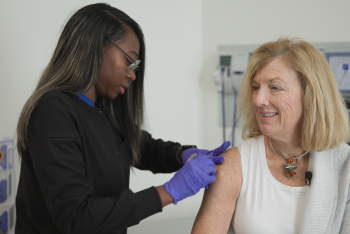Inspira Health CEO Amy Mansue tours Primary Care office, chats with Dr. Kristen Trom about annual...
Read More

Think about the first thing that you open when you wake up each morning… Is it your bedroom door? Your email? No … It’s your eyes!
Working constantly from the time we wake up in the morning until we go back to sleep at night, our eyes are the second most complex organ in the body, getting beaten out by the brain.
In their daily functions as vital organs, the eyes are responsible for taking in all of the different rays of light surrounding you, then processing those rays through optic nerves where the information is then communicated to your brain. Clearly, this is no easy feat.
So what happens when your eyes don’t function as they’re designed to? In most cases, advancements in eyecare can correct these disorders. Here are three of the most common eye disorders among Americans, and how they can be corrected:
An umbrella term, refractive errors encompass the most common eye disorders, including nearsightedness, farsightedness and astigmatism. These disorders are considered to be the least detrimental to an individual, as they are also the most easily corrected. Glasses, contact lenses and occasionally corrective eye surgery can all help to counteract these disorders and bring the eye back to perfect working condition.
The leading cause of blindness around the globe, a cataract is when an individual’s vision gradually becomes cloudy. Like refractive errors, cataracts can occur at any point in a person’s life, including at birth. The only way to fully correct cataracts is with surgery.
As implied in its name, diabetic retinopathy is one of the more common complications that accompanies diabetes. This disorder is caused by the gradual damage to the blood vessels housed in the retina of the eye, and it progresses through four stages of severity. Unlike other disorders, diabetic retinopathy usually affects both eyes at the same pace and severity.
Risk factors associated with diabetic retinopathy include blood sugar and blood pressure levels. Early detection is key for this disorder, as early treatment can drastically reduce the chance of blindness.
Find an Inspira Primary Care Physician here.
Inspira Health is a high reliability organization (HRO), which means safety is the top priority for patients and staff. To make an appointment, call 1-800-INSPIRA.

Inspira Health CEO Amy Mansue tours Primary Care office, chats with Dr. Kristen Trom about annual...
Read More
Hangovers result from dehydration, disrupted sleep, inflammation and the byproducts of alcohol...
Read More
Scheduling a back‑to‑school immunization visit ensures your child meets school requirements and...
Read More